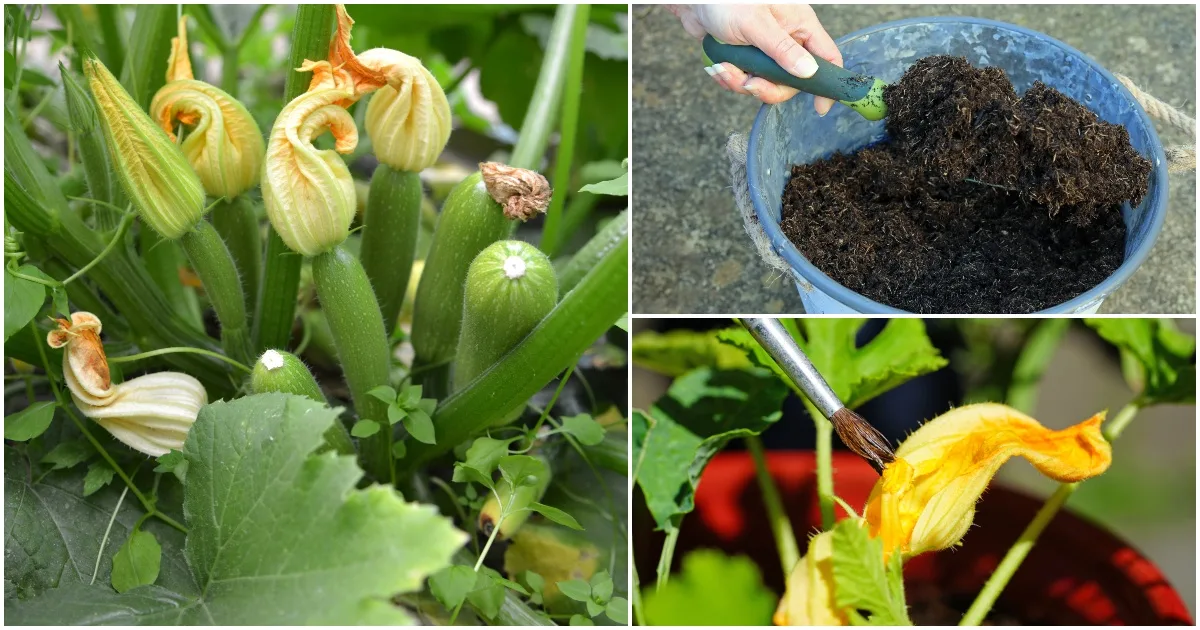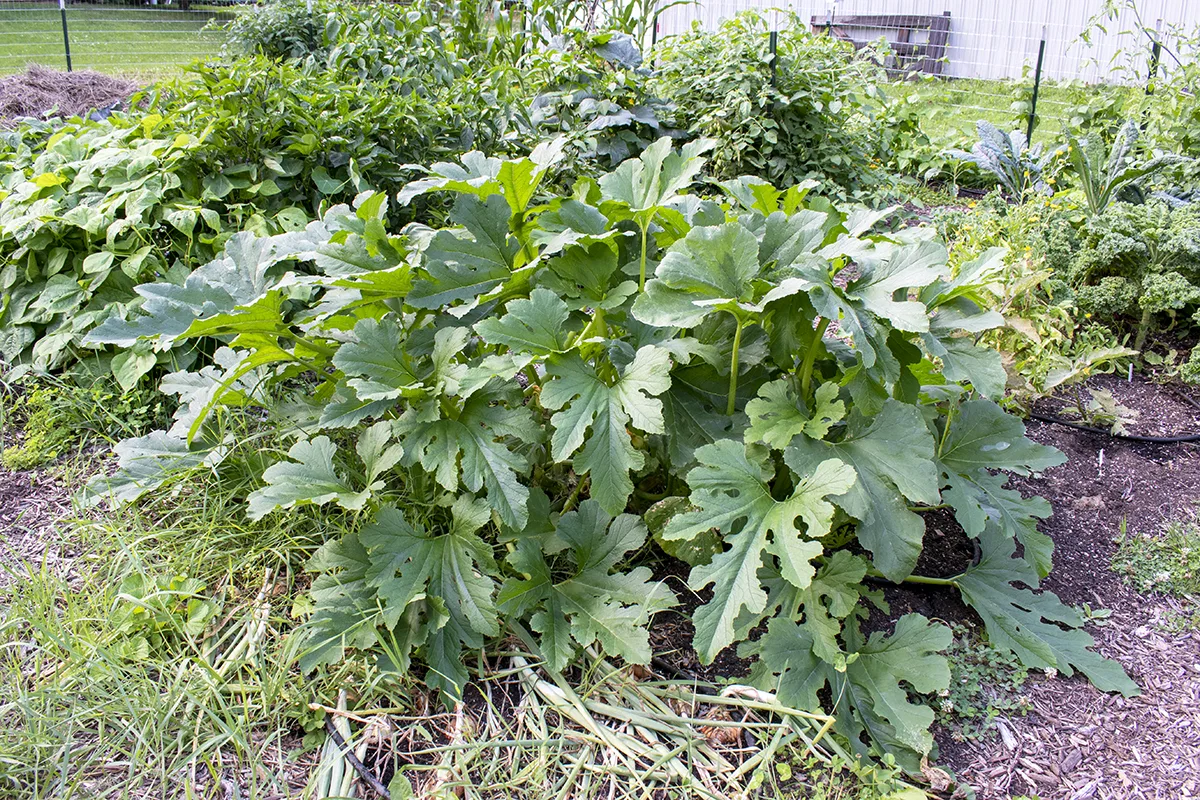
I love summer squash, don’t you? I don’t think I’ve ever had a garden that didn’t have a zucchini plant in it. And why not? Zucchini and summer squash are ridiculously easy to grow, so much so that getting rid of them by mid-summer often becomes a running joke and nearly impossible.
One summer, we drove past our neighbors who had put a pile of zucchini on their stone wall by the road with a sign that said FREE. On our way back, we saw a woman parked on the side of the road with her car door open.
“Oh good,” I said, “someone’s taking those zucchini.”
Nope.
It turned out the pile was bigger when she got back in her car and hurried away. Apparently, she added her squash surplus to the pile.
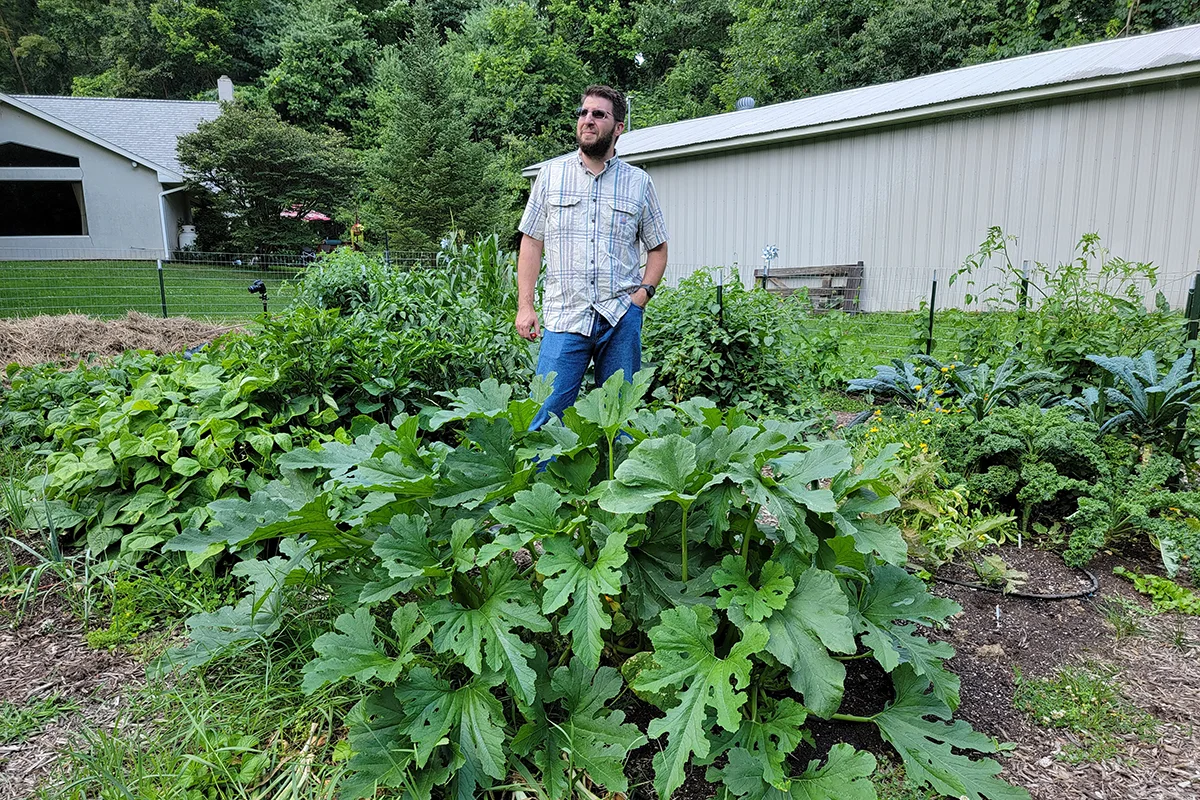
But zucchini jokes aside, these summer cucurbits have a tendency to take over the garden, hiding fruit roughly the size of your average toddler among their leaves. Then when the summer heat and humidity really kick in, so does the powdery mildew. Suddenly, your once prolific plant is now hanging on for dear life.
It’s the same every year.
But what if there was a better way?
Over the years, we’ve realized the wisdom of growing many different plants vertically rather than letting them sprawl on the ground; cucumbers and melons, for example. And yet most of us never even think about training a zucchini to grow up.
Or how about pruning?
We prune tomatoes and pepper plants; why not summer squash? We know that pruning leads to higher yields, and it’s no different with zucchini and summer squash. Rather than pouring energy into total garden domination, your plant will put more effort into fruiting.
And let’s face it, some of these summer squash really need to be reined in. It only takes a few weeks before they’re massive. I’m looking at you, Patty Pan.
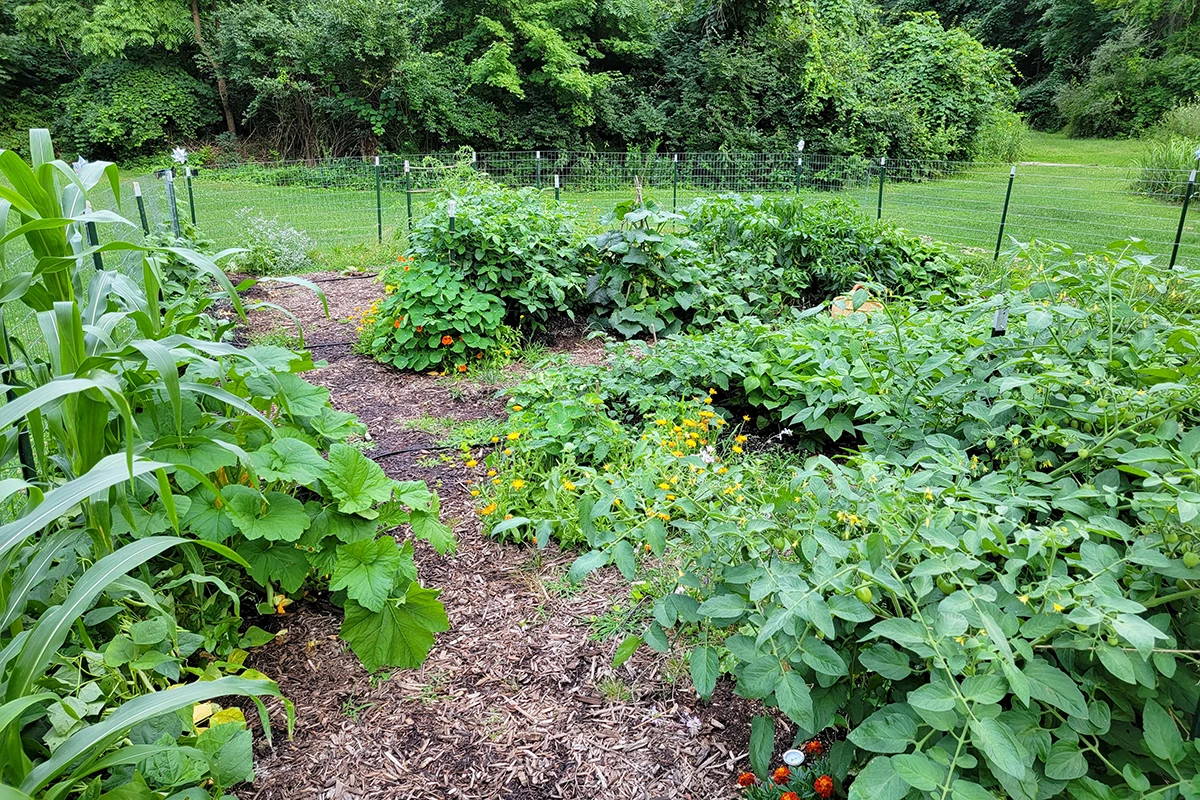
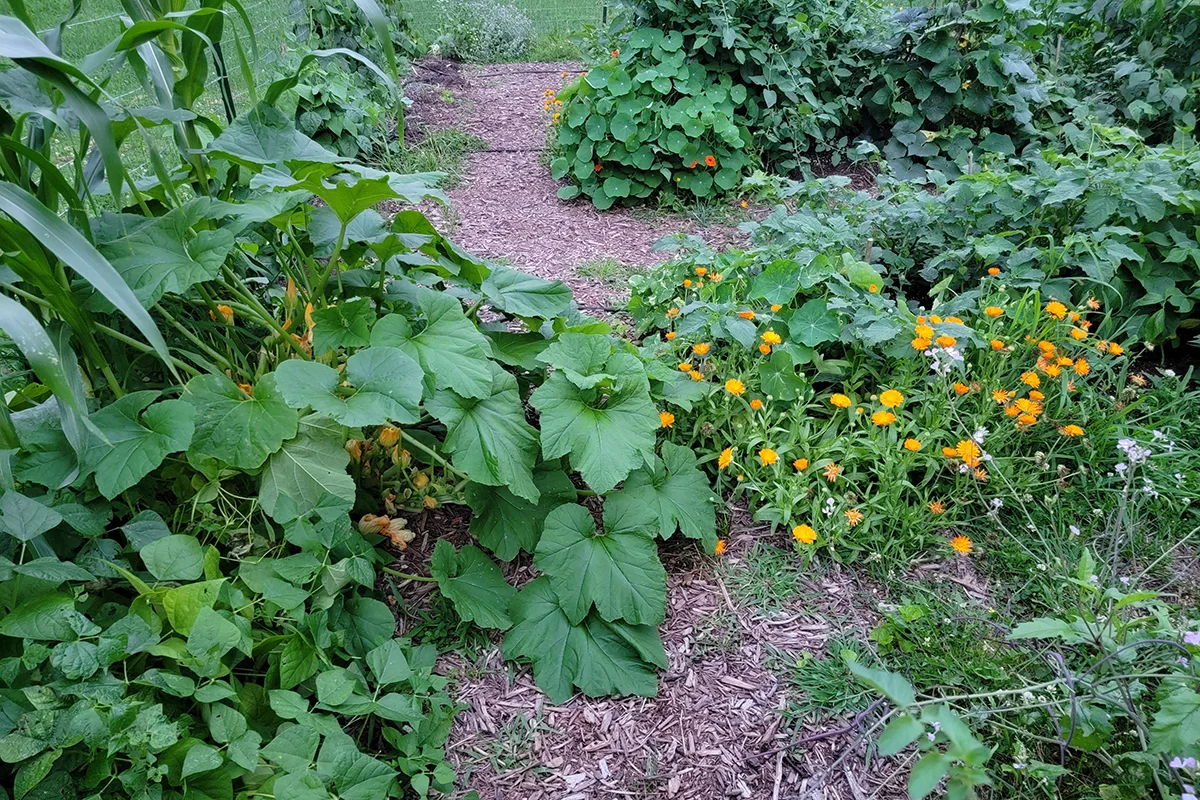
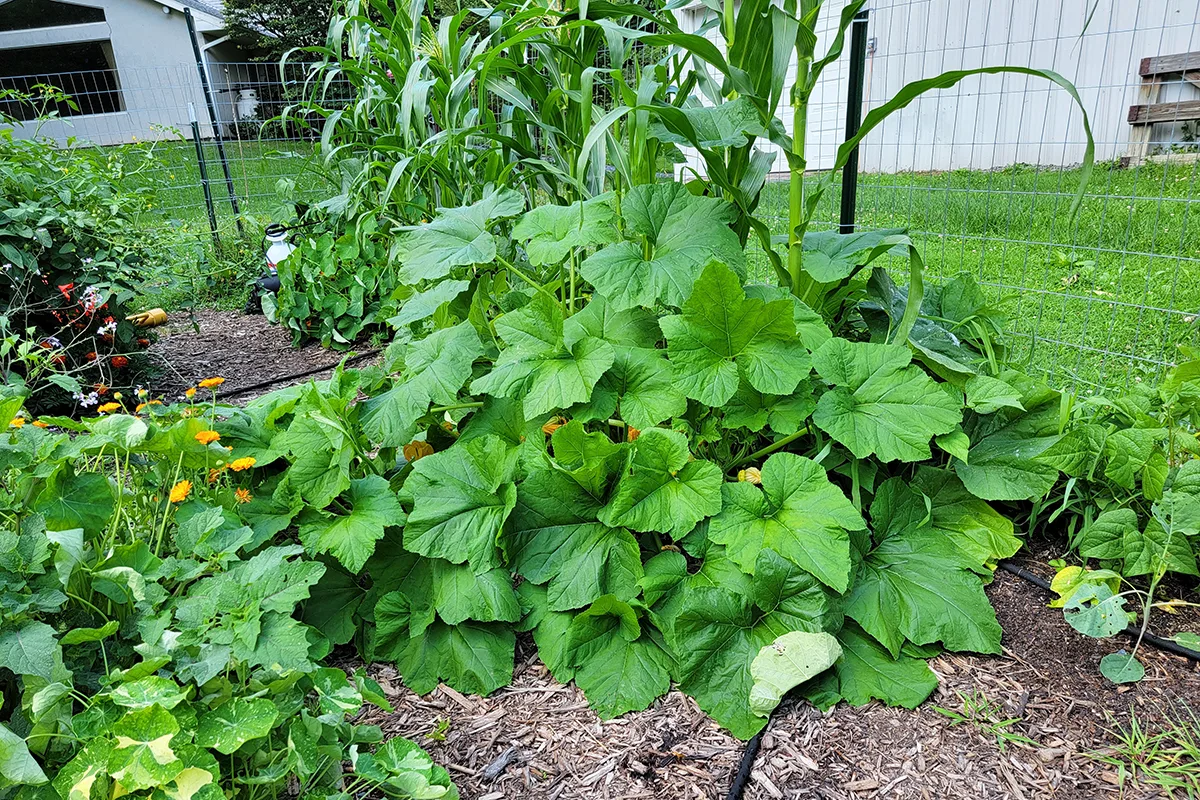
You turn your back on a summer squash for one week, and you can’t even use the pathway in the garden anymore.
What Are the Benefits of Pruning & Staking Zucchini & Other Summer Squash?
There’s a lot to love about giving your squashes a little TLC in the garden. If you take the time to stake and prune them, I think you’ll find the extra effort well worth it.
Improved Yield
As I already mentioned, when we prune off extra leaders or leaves, we allow the plant to focus its energy on growing more fruit. With a few snips of your hand pruners, you’ll be well on your way to more zucchini. Wait. Is that a good thing? You’re going to need this.
Related Reading: Easy Zucchini Pickles Recipe
More Space for Other Crops
Anytime we encourage our vegetables to grow up, rather than out, we free up space in our garden for other plants. When you stake a zucchini and grow it vertically, you only need one square foot of garden space per plant. Alternatively, when we finished pruning and staking our mature zucchini plant, we reclaimed an extra twelve square feet of soil to plant some cool weather crops for this fall or some beneficial zucchini companion plants.
Slow or End Powdery Mildew
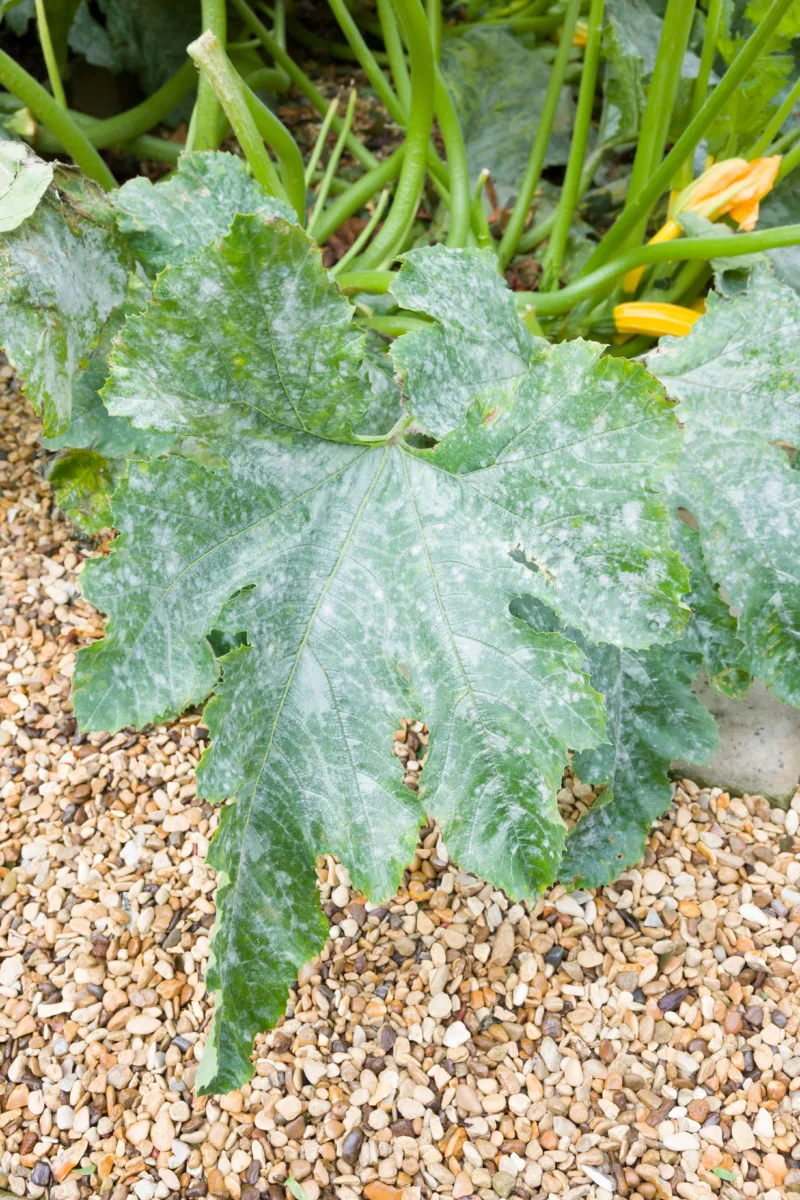
One of the biggest problems with most summer squash is powdery mildew. It always seems to show up overnight. Everything is fine, and suddenly it looks like your zucchini leaves have been blasted with talcum powder. By getting your plant up out of the dirt, you reduce the likelihood that it will contract powdery mildew from spores in the soil.
Granted, that still leaves spores spread by the wind, but with regular pruning, your plant will get more light and better circulation, which can help stave off powdery mildew.
Better Disease Resistance
Along with less powdery mildew, you can expect less disease in general. Most gardening diseases start in the soil or are transmitted when soil is splashed on the underside of leaves by rain. When you train your zucchini to grow up, you’re getting it away from the pathogens living in the dirt.
Easier to Spot Fruit
No more toddler-sized zucchinis hiding in a jungle of leaves. By growing zucchini vertically and pruning off lower leaves, you’re creating a more open and airy plant. It’s much easier to spot squash growing on plants this way.
Improved Pollination
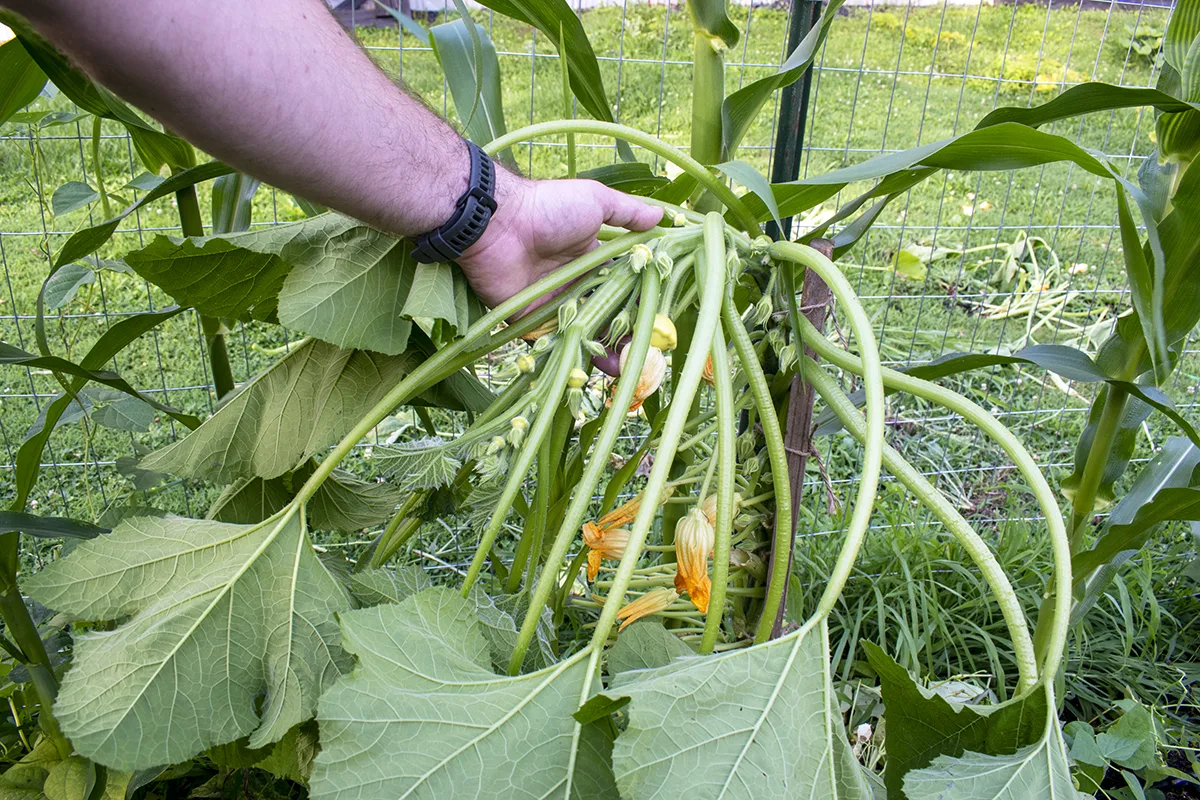
Likewise, if you can see the squash easier because the plant is more open, pollinators will also benefit. Pruning lower leaves back makes it easier for pollinators to spot squash blossoms. In the end, you end up with higher yields as more flowers are pollinated than not.
Let’s take a quick look at how to prune and stake summer squash. Ideally, the best time to start this process is when your squash is a seedling. However, it can be done later in the season as well. It just takes a little more effort and care.
Staking
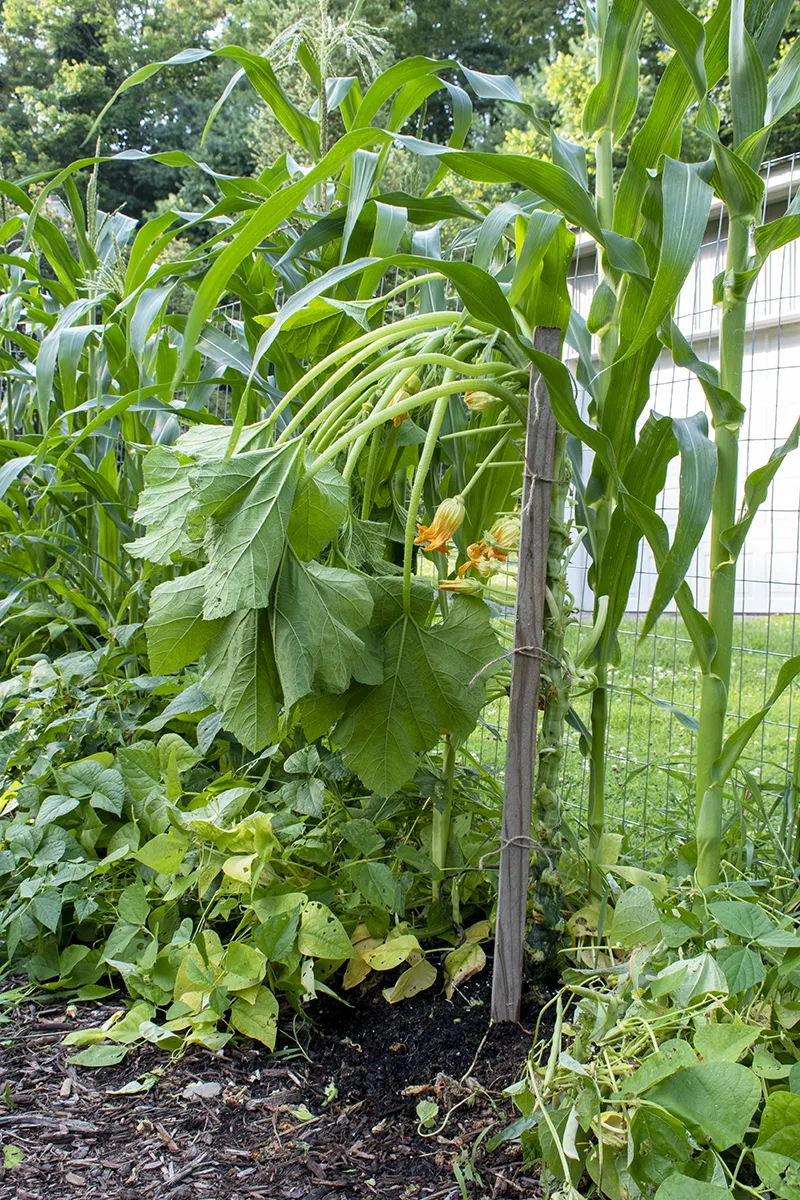
If starting this process in the spring, put your stake in the ground as soon as you transplant your seedlings or once direct-sewn seedlings germinate. The sooner, the better, as you don’t want to injure the root system.
You’ll need a stake roughly five feet tall. It doesn’t have to be fancy, just sturdy. A rough, wood stake is just fine. Place it in the ground 2-3 inches from the seedling and drive it into the ground 8-12 inches.
Using twine or your preferred material for tying plants, secure the base of the squash stem to the stake. You don’t want to secure it too tightly when it’s young, as the stem will thicken over time and grow leaves. Leave a little room for it to grow.
As the plant grows, continue to tie it further up the stake every few inches to support it properly.
You can still stake a zucchini that’s been growing on the ground for some time, although it’s easier to do if you have a helper. The plant will be heavy and awkward, and you’ll need to be careful that you don’t snap the stem or disturb the roots.
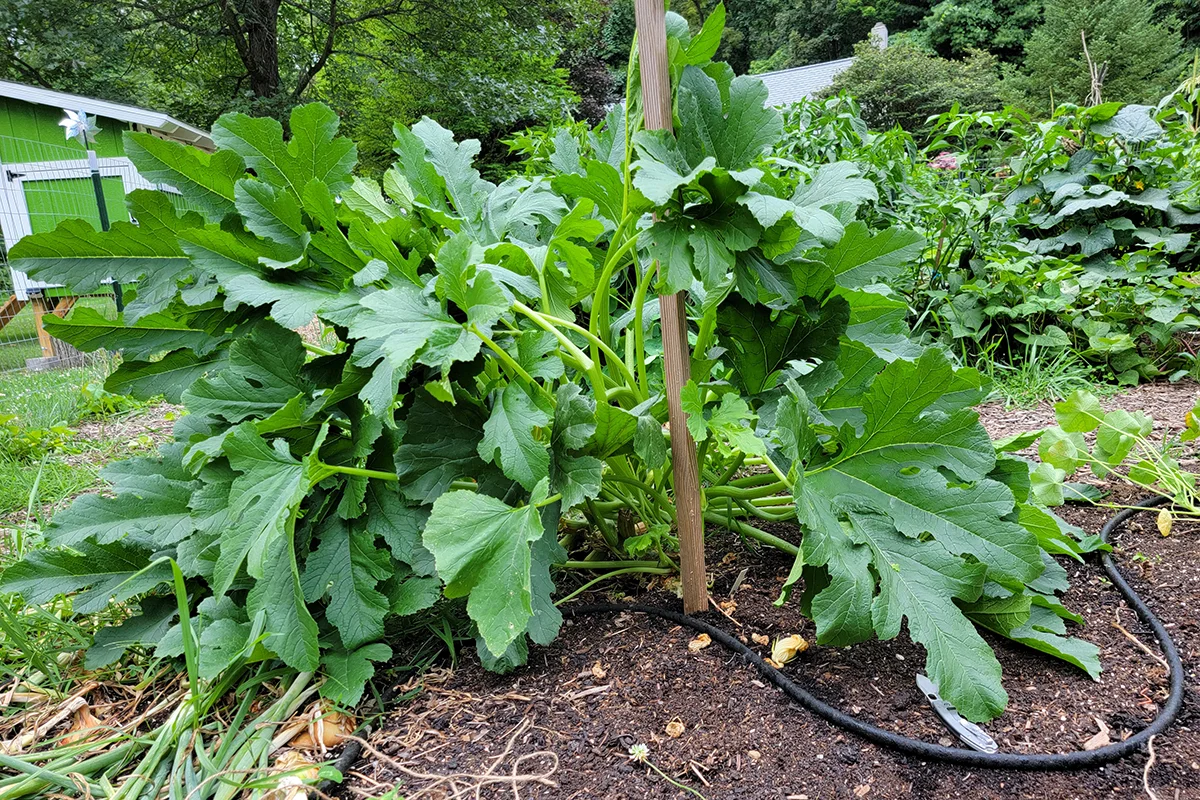
You risk damaging roots with the stake, but the plant should recover. At this point, you’ll want to place the stake 4-6” away from the base of the stem to avoid major root damage.
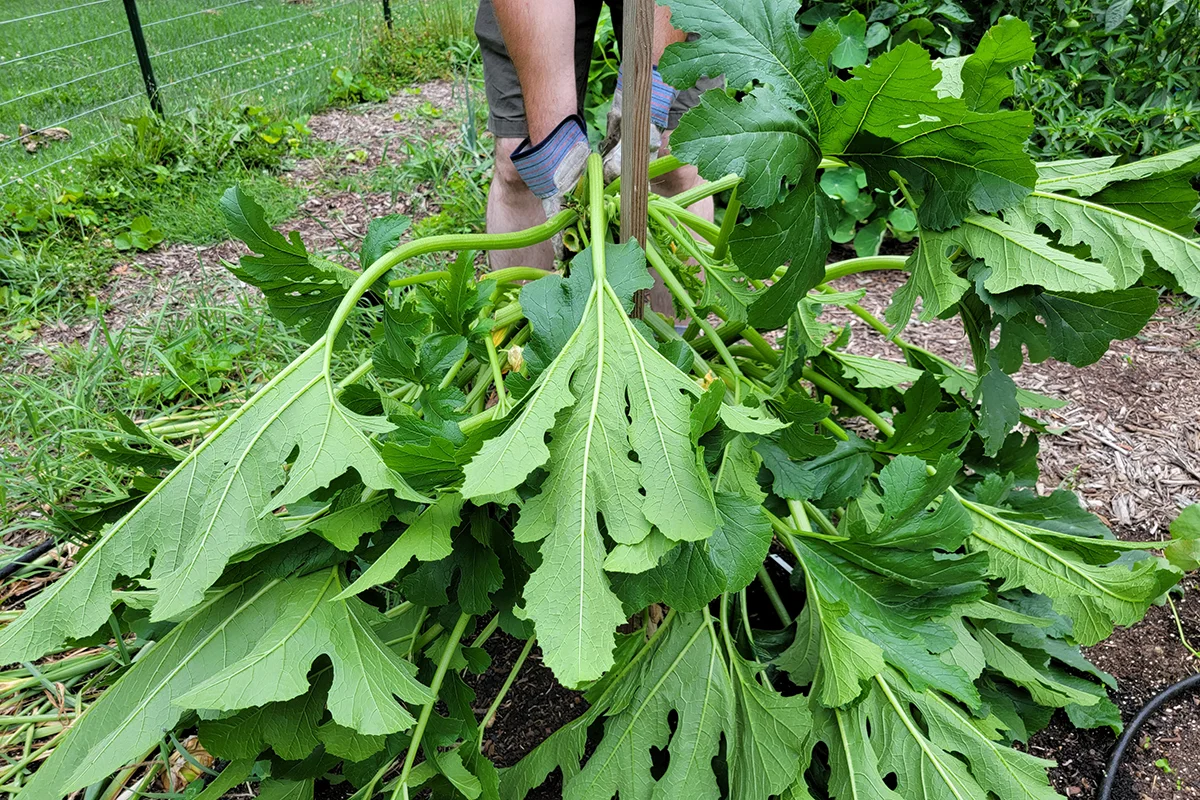
Have a helper slowly lift the bulk of the plant while you carefully tie the large stem to the stake every few inches. You may need to prune leaves as you go.
Pruning
It’s important not to prune indiscriminately. I am guilty of reaching into my summer squash plants and hacking off whatever leaves happen to be in my way.
Until now, I have seen the error of my ways.
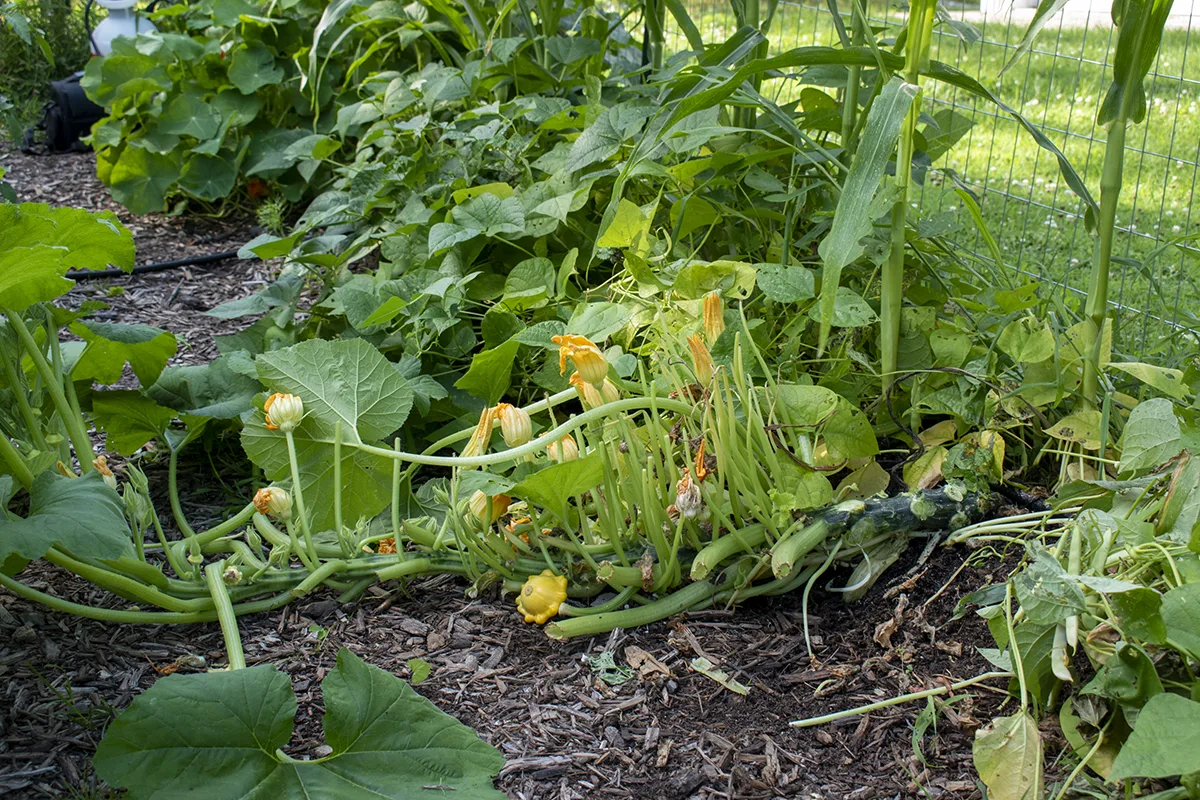
Only prune leaves that are growing below the fruit. The fruit relies on the leaves above it for energy and nutrients to grow. (Oops.) By trimming leaves below the current set of fruit, you allow the plant to concentrate energy into squash production rather than maintaining those leaves.
It’s also very important to cut the leaf stalks off flush with the stem. The leaf stalks are hollow, and leaving a few inches of stalk attached to the stem creates the perfect place for insects to hide and burrow and for water to collect and hasten rot.
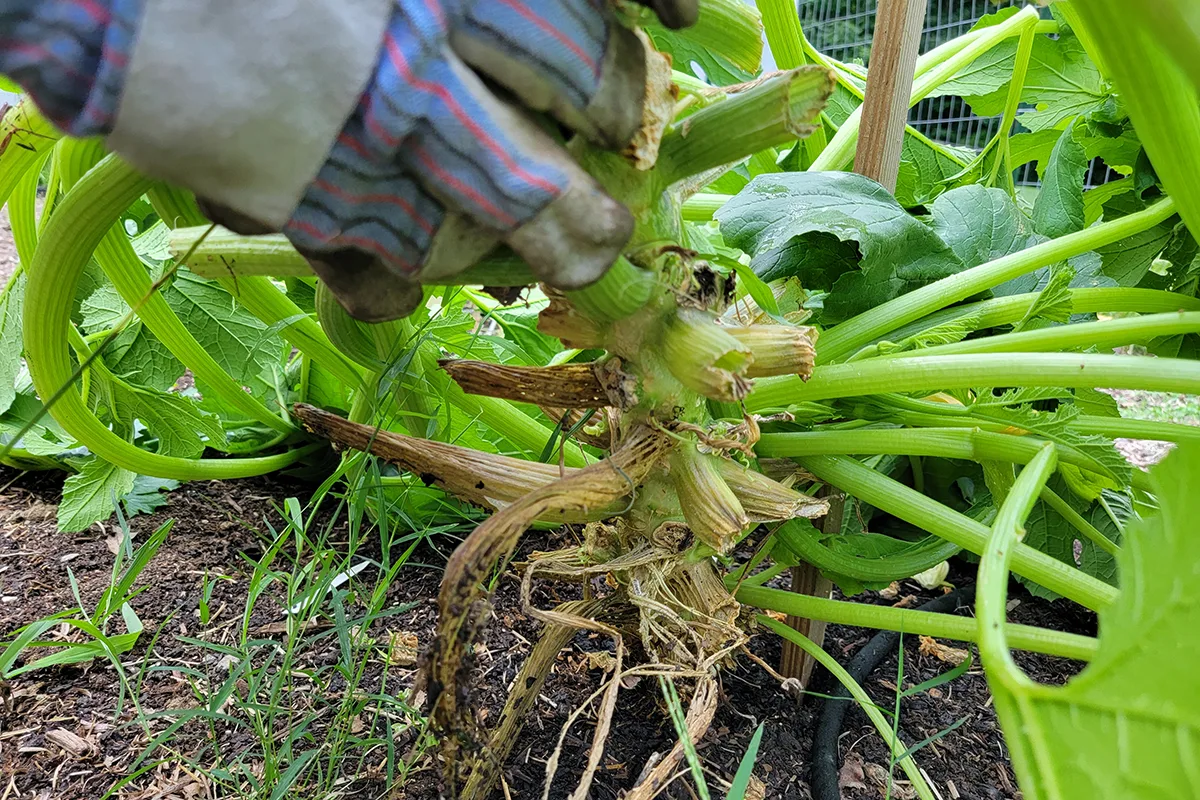
Ask me how I know.
Cut leaves off cleanly at the stem and the plant will scab over and heal quickly.
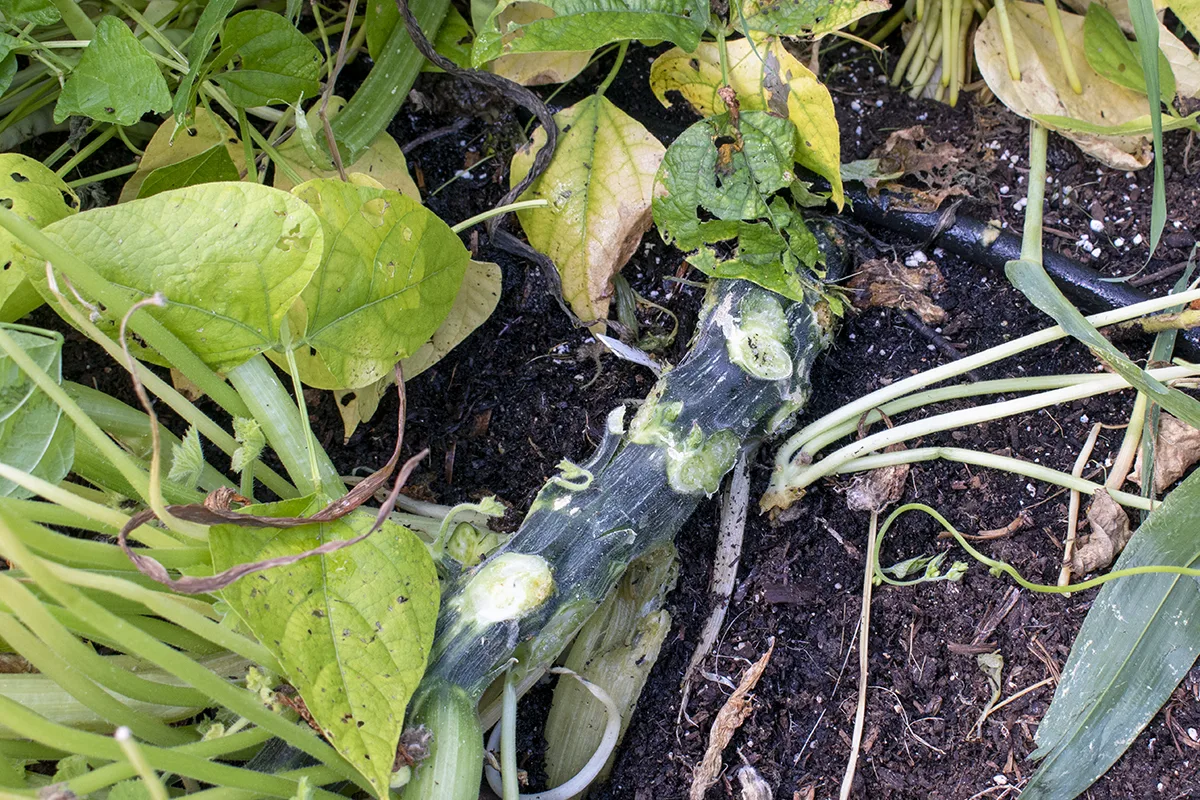
Naturally, you always want to use clean, sterilized tools when pruning your plants.
If you’re pruning a larger, mature plant in preparation for staking, you’ll also want to prune off any leaders that have grown off of the main stem.
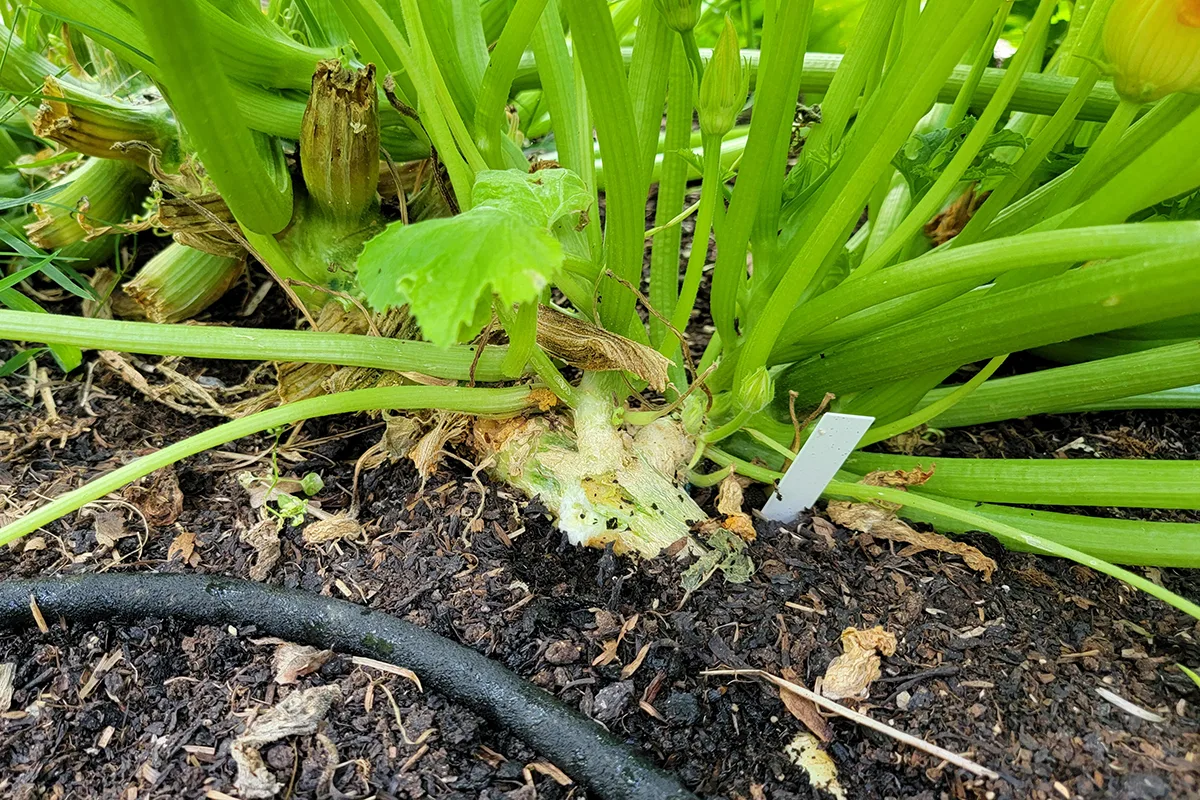
Again, doing so will allow the plant to put more energy into fruit production rather than covering more ground.
Staking & Pruning Later in the Season
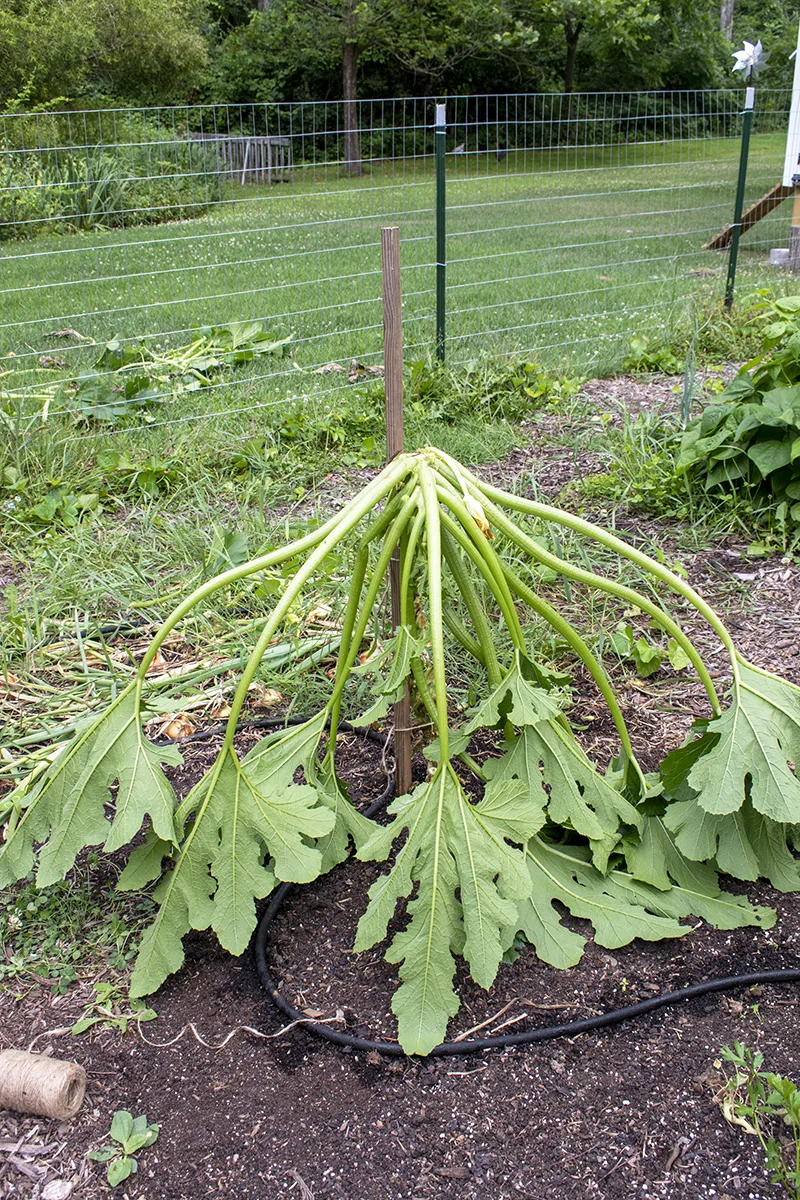
If you didn’t get to start this process in the spring, and you’re just now deciding to reroute your squash go slowly and have a partner help. Your plant will look a little funny for a few days as it corrects which direction its leaves are growing. Within a week, it should bounce back from its major overhaul and continue making more zucchini than you know what to do with.
Now that you know how to stake and prune zucchini to prevent them from taking over your garden, what will you do with all those extra squash? I hear my neighbor has another pile for free on his stone wall if you want to drop some off. I won’t tell.
Read Next:

Get the famous Rural Sprout newsletter delivered to your inbox.
Including Sunday musings from our editor, Tracey, as well as “What’s Up Wednesday” our roundup of what’s in season and new article updates and alerts.



